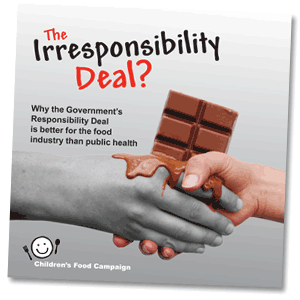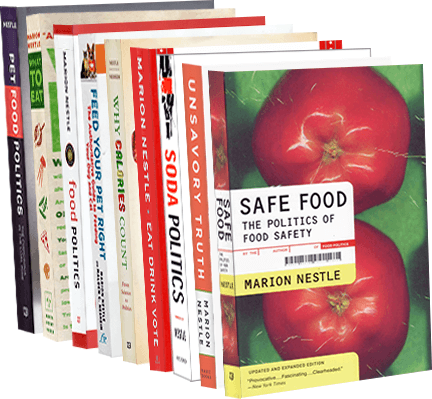My monthly (first Sunday) Food Matters column in the San Francisco Chronicle:
Q: My kids are heading back to school, and I’m braced for another year of fighting about what they get for lunch. The school says there is a new law that makes things better. Will it?
A: There is indeed a new law. Getting it implemented, however, will take some doing. With much fanfare, Congress passed the Healthy, Hunger-Free Kids Act of 2010. But unless your children attend one of the 1,250 schools that applied for and won an award from the U.S. Department of Agriculture’s HealthierUS Schools Challenge, they might graduate before seeing its benefits.
That’s because the law has to be turned into regulations, an interminable process that has barely begun.
Significant changes
But never mind the law’s odd title. It is meant to do good things. It increases school meal eligibility for low-income children. It encourages local farm-to-school networks and school gardens. It expands access to free drinking water in schools (yes, this is necessary in some places).
Most important, the law gives the USDA the right to set food standards for school meals.
Now the USDA can specify numbers and sizes of food servings, rather than nutrient percentages. This should make it easier for schools to serve foods, not food products, and offer more and larger servings of fruits, vegetables and whole grains.
The USDA can also apply these standards to all foods sold during school hours – breakfasts and lunches, but also “competitive” foods sold in vending machines, a la carte lunch lines and school stores. California is already doing this, but the new law takes it national.
As always, the devil is in the details. The USDA’s proposed rules for implementing the law take up 78 pages of microscopic type in the Federal Register. Because the USDA worried about the effects of the new rules on meal acceptance, participation rates, practicality and cost, it made some compromises.
Its standard for added salt seems generous, and it did not set one for added sugars. The USDA assumed that if other standards were followed, there would not be much room for sugary foods.
Except for milk. The USDA standards require milk to be low-fat but allow it to be flavored (translation: sugar-sweetened). Otherwise, the USDA says, children might not drink milk and will not get enough calcium.
Chalk this up to dairy lobbying. Schools account for more than 7 percent of total milk sales in the United States, but more than half of all flavored milk.
Lobbyists in motion
The proposed standards have set other lobbies in motion, too. One proposal is to encourage children to try new vegetables by restricting starchy vegetables – white potatoes, corn, green peas and lima beans – to one cup per week.
Makers of french fries and produce lobbying groups went to work, and 40 members of Congress have demanded reconsideration. The beef and poultry industries want the proposals to place more emphasis on high-quality, nutrient-rich proteins that offer all essential amino acids in a serving (neither protein nor amino acids are lacking in American diets).
The USDA’s proposals elicited more than 130,000 letters of comment, and the agency now has to deal with them. Officials say they have not even started on the rules for competitive foods.
The USDA must issue final rules by December 2013 and will undoubtedly give schools even more time to implement them. This gives lobbyists plenty of opportunity to create mischief.
Congress might backtrack. Under pressure to cut spending, the House of Representatives added a rider to its agriculture spending bill urging the USDA to scrap the proposals. The House must think the additional 6 cents per meal authorized by last year’s bill was overly generous.
Much is at stake here. School food matters because schools set an example. Schools that offer poor-quality food because it is cheaper are telling children that what they eat is not important. If a school promotes sales of sodas and snacks, it reinforces the idea that children are supposed to be eating junk foods.
Effects on learning
I have much sympathy for what school food professionals are up against, financially and bureaucratically. Nevertheless, I’ve visited plenty of schools – even in low-income communities – where children are served grown-up food, eat it happily and are eager try new tastes.
Successful school food makes the political personal. The cooks cook. They know the students’ names. They make it clear that they care about what the kids eat. They are invariably backed up by a principal committed to the belief that what kids eat affects their health and learning.
The USDA is trying to make it easier for schools to serve healthier meals. Write your congressional representatives to support the proposed school food standards.
Marion Nestle is the author of “Food Politics” and “What to Eat,” among other books, and is a professor in the nutrition, food studies and public health department at New York University. E-mail comments to food@sfchronicle.com. This article appeared on page G – 4 of the San Francisco Chronicle, September 4, 2011.



